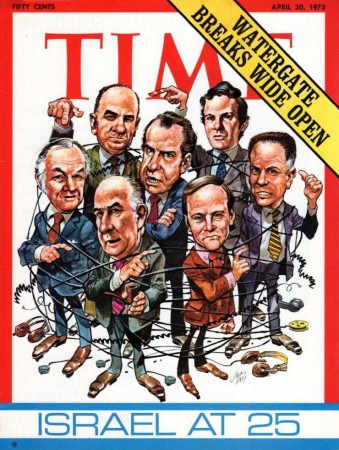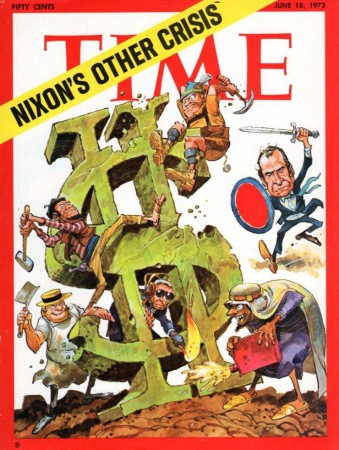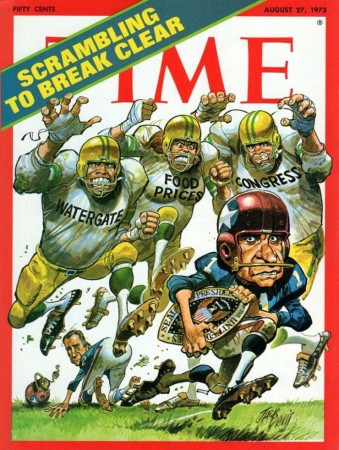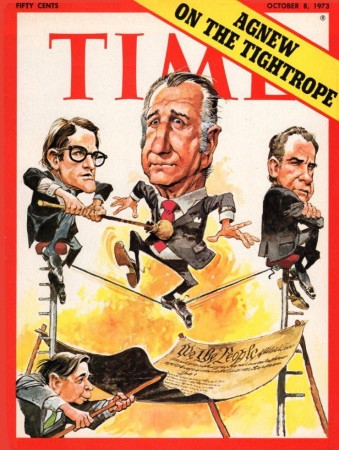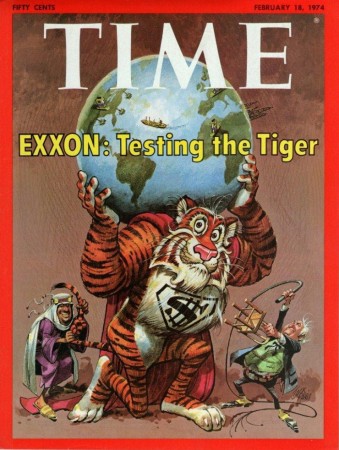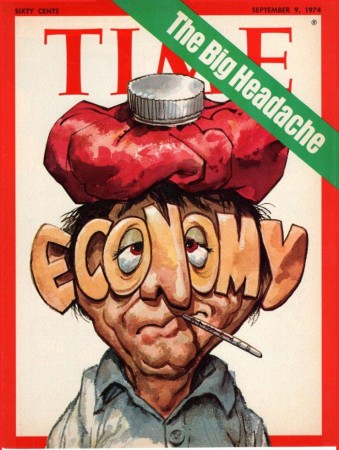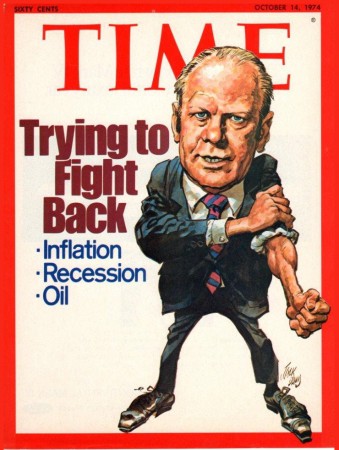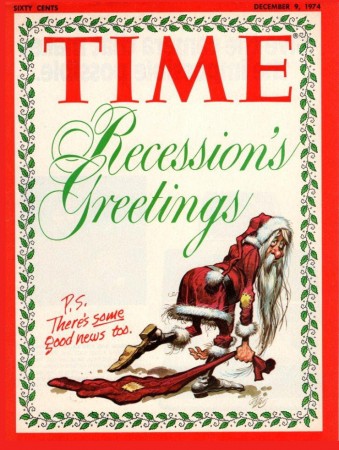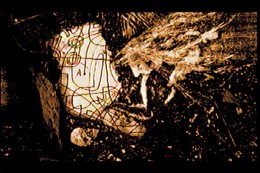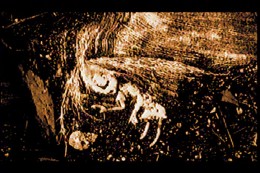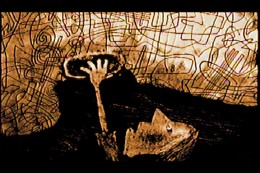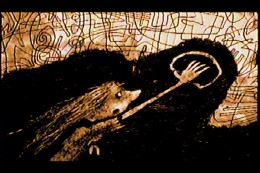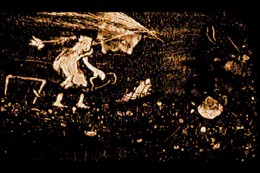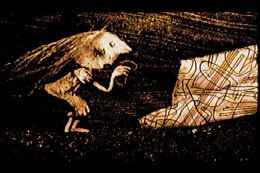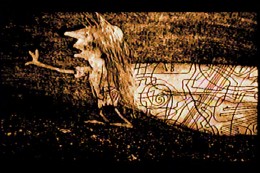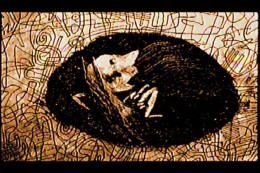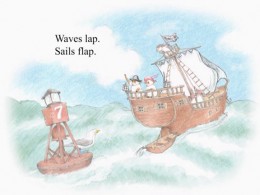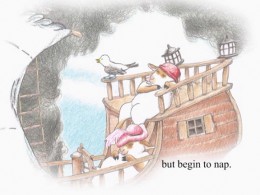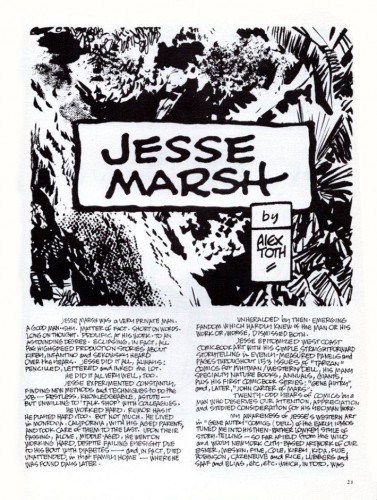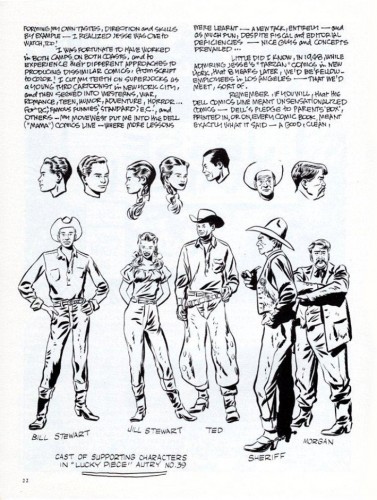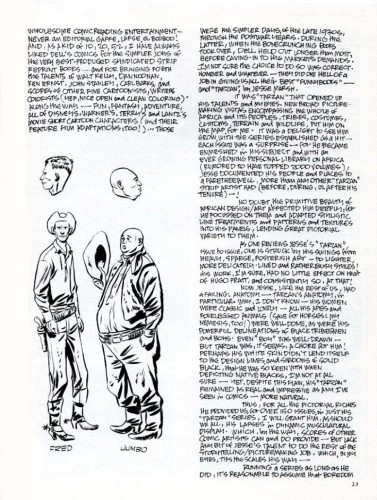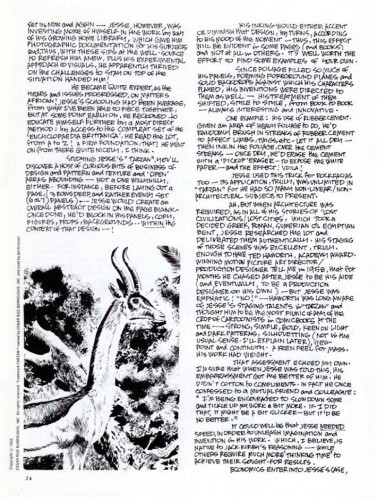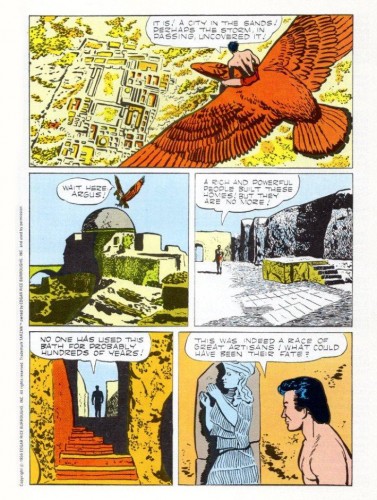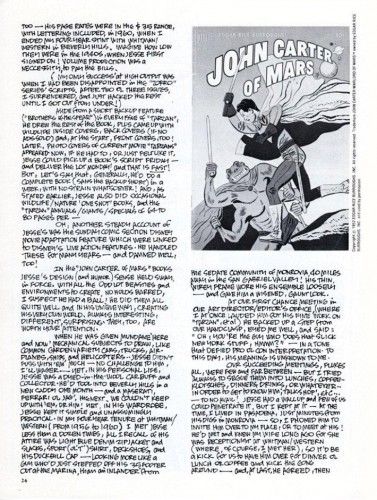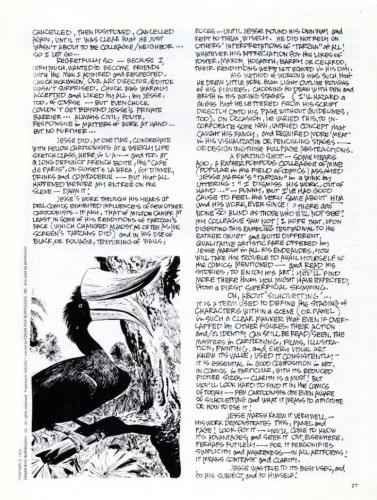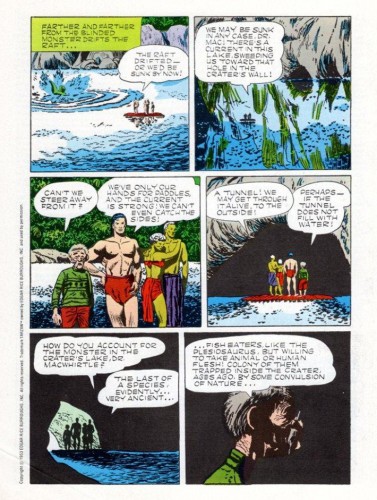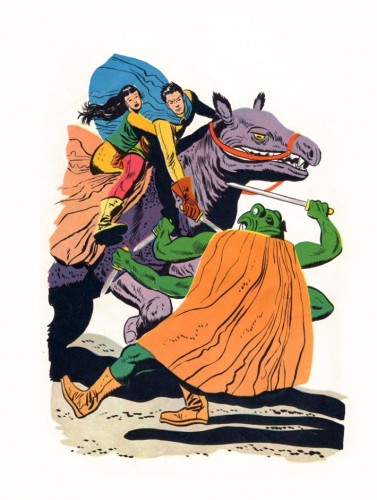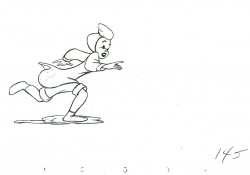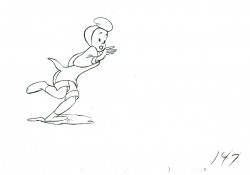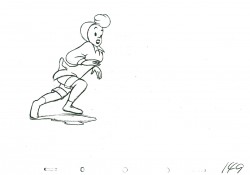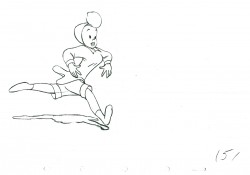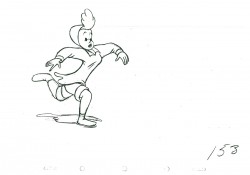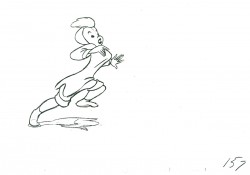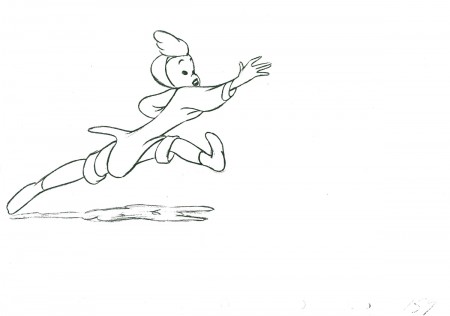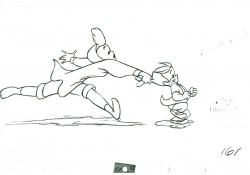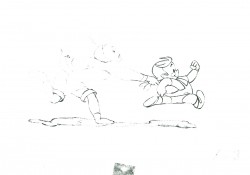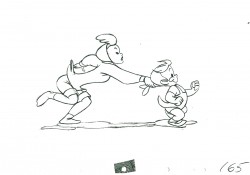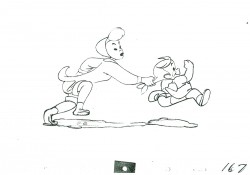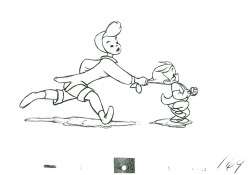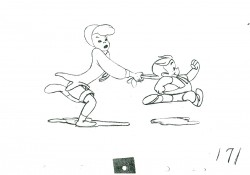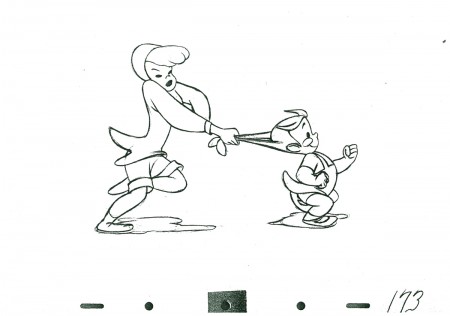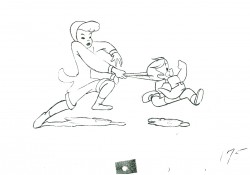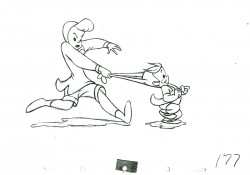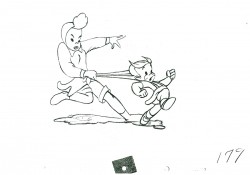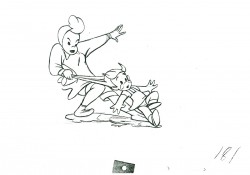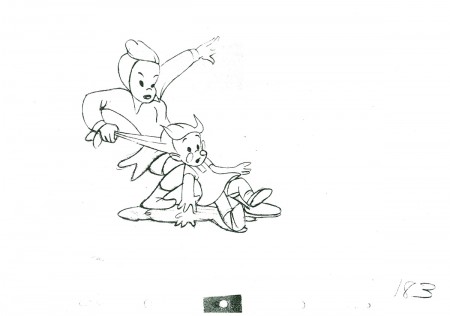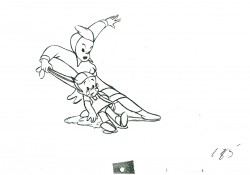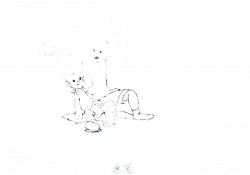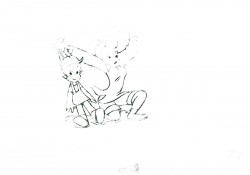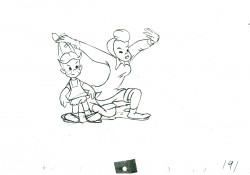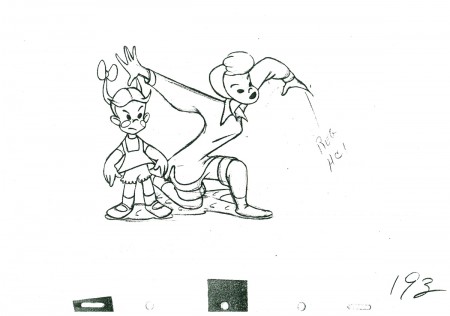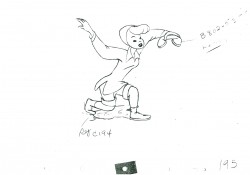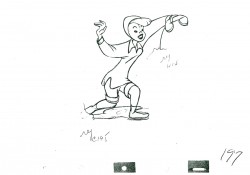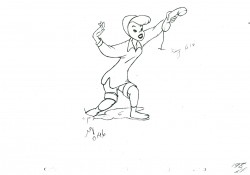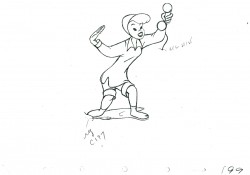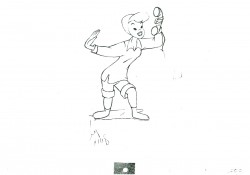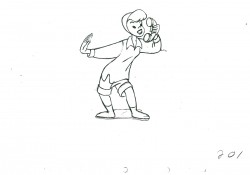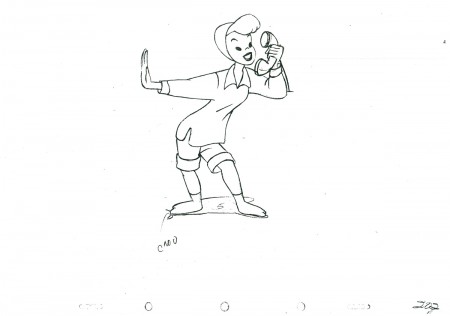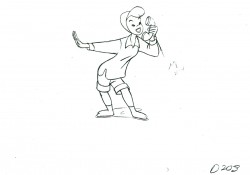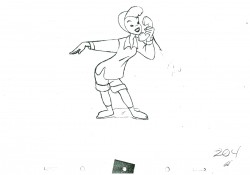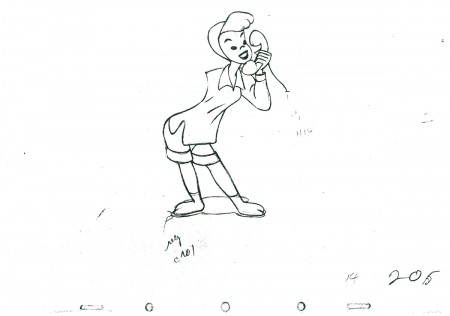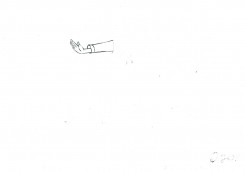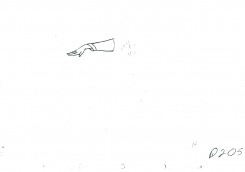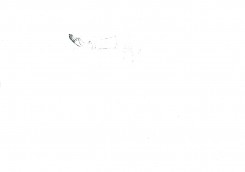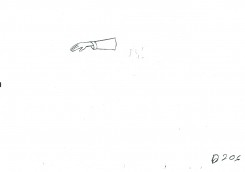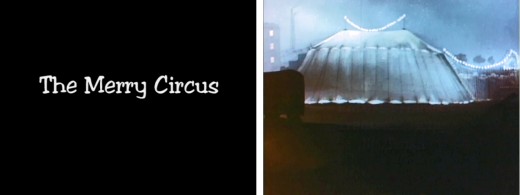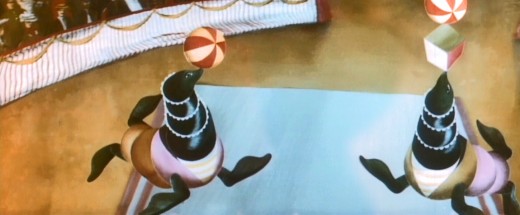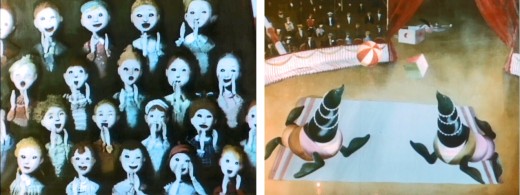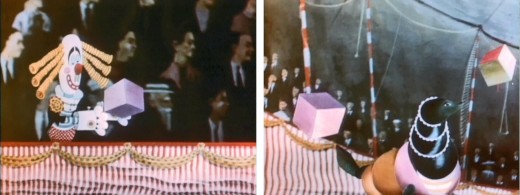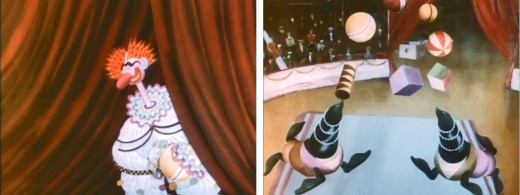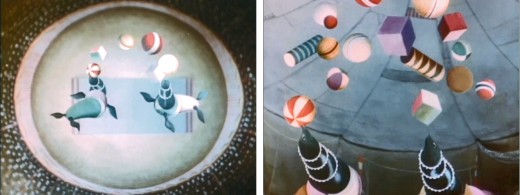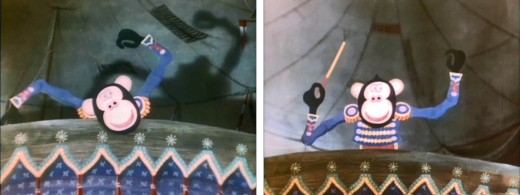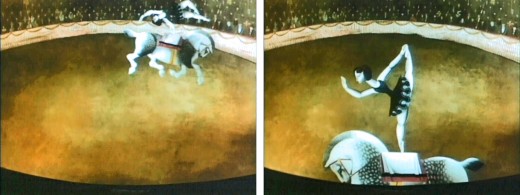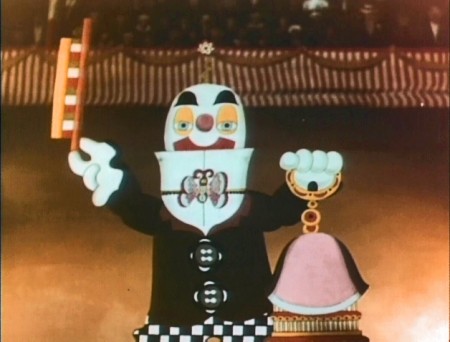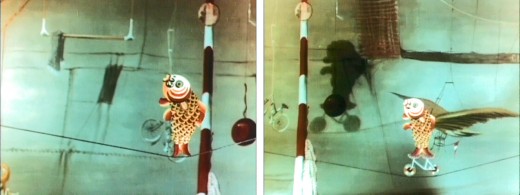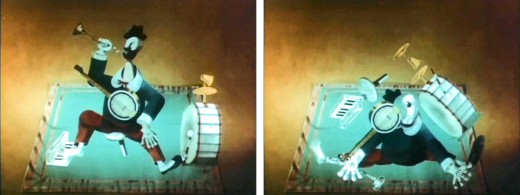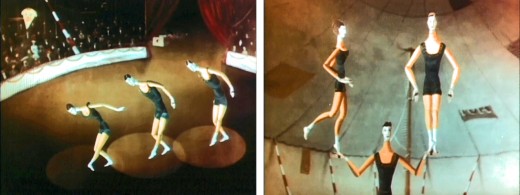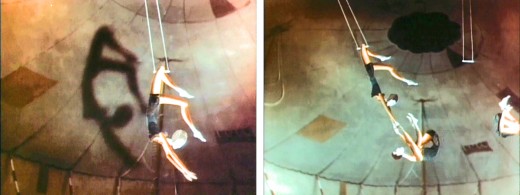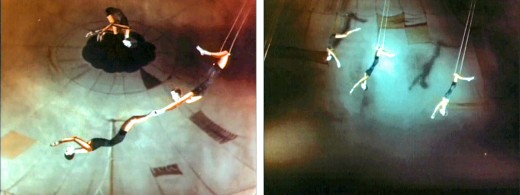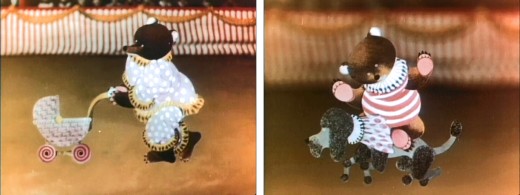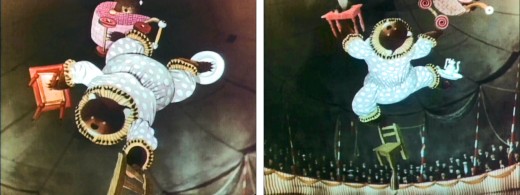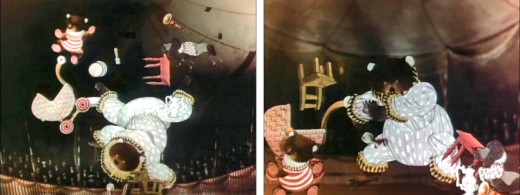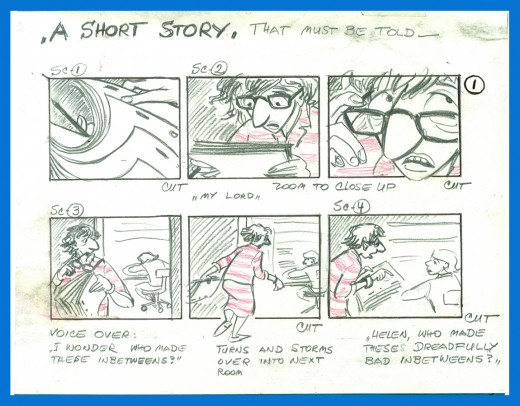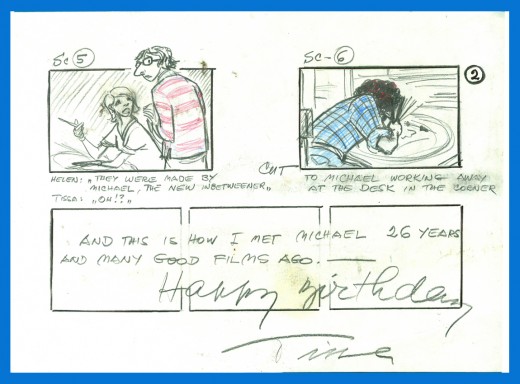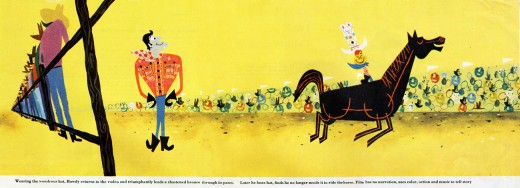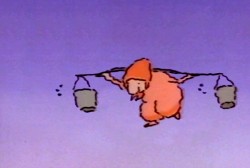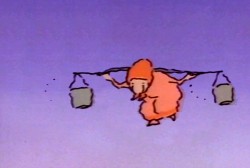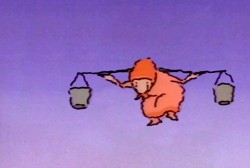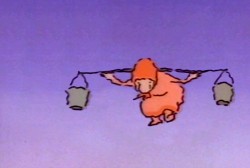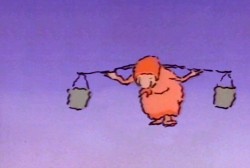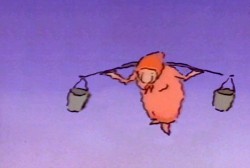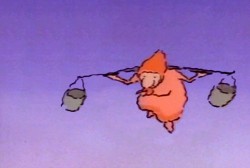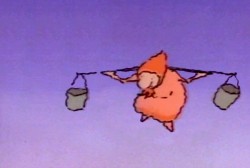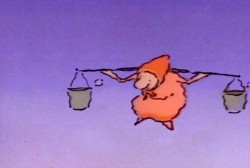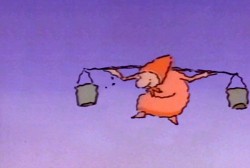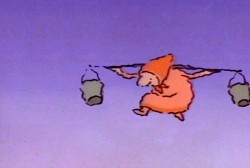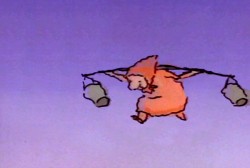Monthly ArchiveApril 2010
Bill Peckmann &Illustration 30 Apr 2010 07:30 am
Jack Davis’ Time
- Here are some Time Magazine covers by Jack Davis from 1973 & 1974. These pieces are part of Bill Peckmann‘s amazing collection and I’m glad to showcase them here today. Thanks Bill.
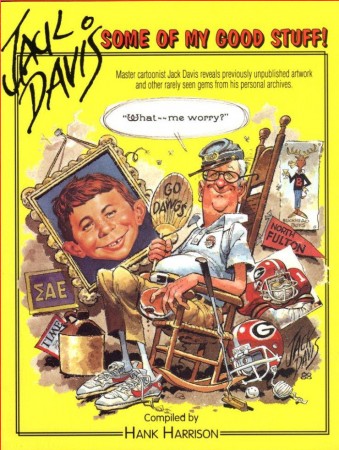
This of course, isn’t a Time Magazine cover but
the cover to Jack Davis’ book of collected works
Some of My Good Stuff.
Animation &SpornFilms 29 Apr 2010 08:54 am
Matt Clinton
- The bulk of this piece was written in May 2006. I only feel stronger about anything I’ve said in it and have done some minor additions to the whole.
Matthew Clinton came to my studio in 2003. After a years worth of correspondence between us and my viewing his senior film dozens of times in multiple versions – all of which I found totally enticing and absolutely compelling to watch , I offered Matt a job and did what little I could to support his arrival.
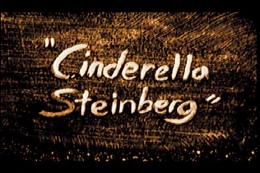 He came quietly into my studio and immediately took hold with his innate gift for masterful animation. What follows are hi-contrast frame grabs from his thesis film, Cinderella Steinberg. I interpret the film as an examination of the overwhelming power of art on the recipient, in this case poor Cinderella. Tomorrow, we’ll look at some of Matt’s work in the past three years. I urge you to enlarge some of the images; each frame of his film is a multimedia construction in itself. Leaves and dirt and straw and a Steingberg painting.
He came quietly into my studio and immediately took hold with his innate gift for masterful animation. What follows are hi-contrast frame grabs from his thesis film, Cinderella Steinberg. I interpret the film as an examination of the overwhelming power of art on the recipient, in this case poor Cinderella. Tomorrow, we’ll look at some of Matt’s work in the past three years. I urge you to enlarge some of the images; each frame of his film is a multimedia construction in itself. Leaves and dirt and straw and a Steingberg painting.

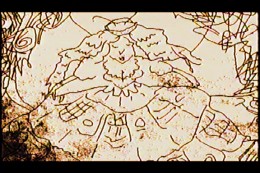
(Click on any image to enlarge.)
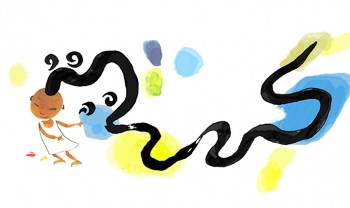 One of the first pieces he worked on was animation for an HBO special entitled HAPPY TO BE NAPPY AND OTHER TALES OF ME. As a new guy, Matt was supposed to be plugging in some animation bits to fill out the show. I gave him lots of pieces that ended up dancing around my less poetic animation. He helped define the art style to match illustrator Chris Raschka‘s beautiful, loose watercolors.
One of the first pieces he worked on was animation for an HBO special entitled HAPPY TO BE NAPPY AND OTHER TALES OF ME. As a new guy, Matt was supposed to be plugging in some animation bits to fill out the show. I gave him lots of pieces that ended up dancing around my less poetic animation. He helped define the art style to match illustrator Chris Raschka‘s beautiful, loose watercolors.
Then, for the same show, I gave him a number of more limited short films to animate, himself. In the end, the two of us did all of the animation for the half-hour show (about 17 mins) in 2½ months.
Things got quiet for a bit, and he helped define the style of my in-progress feature, POE. We wanted it to match the daring graphics Jason McDonald was putting into his storyboard pages. Matt found a solution once I defined the problem.
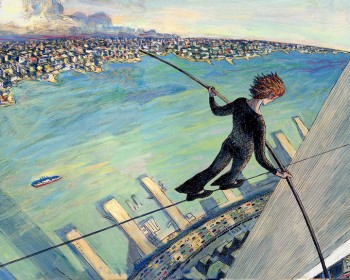 With The Man Who Walked Between The Towers, I dove into the meat & potatoes animation for the 10 min film and gave all the poetic pieces to Matt and Tissa David. By this time, I was aware of the talent I had working for me.
With The Man Who Walked Between The Towers, I dove into the meat & potatoes animation for the 10 min film and gave all the poetic pieces to Matt and Tissa David. By this time, I was aware of the talent I had working for me.
The scenes where Philippe Petit first steps onto the highwire were those done by Matt. Of course, I directed and coaxed elements I wanted from the scenes, but it was magic finding someone who so easily and quietly was able to give me what I sought and do it with such sublime grace and ease and so little fanfare.
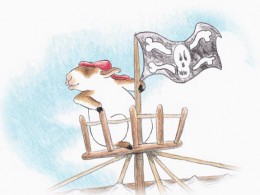 There were three films for PBS’s Between The Lions.
There were three films for PBS’s Between The Lions.
Sheep On A Ship is almost completely Matt’s. It was a delicate watercolor style from a best selling book that we had to match exactly. Needless to say, it did.
Here are stills from the PBS show,
Between the Lions:
Sheep On A Ship
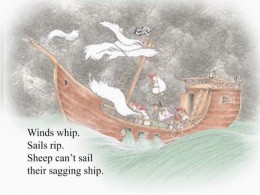
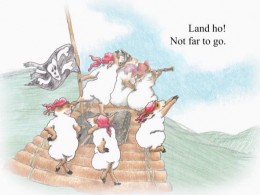
(Click any image on this page to enlarge.)
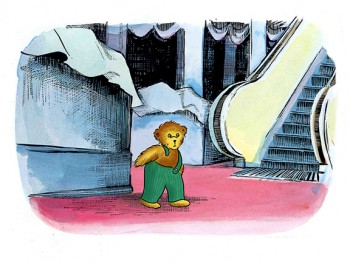 There were also five DVD’s we did for Scholastic & Fisher-Price. Each featured a world class, famous children’s book and included about 60 minutes of animation to illustrate the book and games included. Jumping over five different illustration styles in a few months and animating emotionally and delicately, Matt was able to always rise to the occasion and perform as a first rate actor with delicacy, grace and charm.
There were also five DVD’s we did for Scholastic & Fisher-Price. Each featured a world class, famous children’s book and included about 60 minutes of animation to illustrate the book and games included. Jumping over five different illustration styles in a few months and animating emotionally and delicately, Matt was able to always rise to the occasion and perform as a first rate actor with delicacy, grace and charm.
Corduroy for Scholastic/Fisher-Price
I obviously love this guy’s work. No doubt he brought a lot of knowledge away from CalArts, but he also brings an inherent world of taste dignity and charm to everything he does; that wasn’t learned in school. Matthew Clinton’s a rare talent.
By now, Matt just about runs the animation end of my studio and he’s earned my full trust and support. It’s gotten to the oint where I wonder how I could operate without him.
Articles on Animation &Independent Animation 28 Apr 2010 07:32 am
Raoul Servais
The following is an article by the animation artist Raoul Servais. He was a major force in the international scene when this article was published in Animafilm #1 back in 1979.
by Raoul Servais
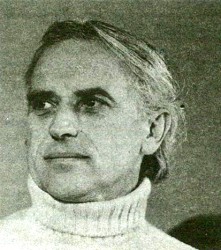 I have been asked to present my opinions on questions which determine the relationship between the author of an animated film and his profession, and the ensuing interdependences: I will,confine myself to outlining an opinion which is perhaps applicable only to artists working in more or less similar conditions. The relationship between the author of an animated film and his work differs so greatly in various countries, depending on socio-economic conditions, the organizational structure of production and, of course, individual talent, that it would be risky to proclaim a universal opinion applicable to all cases.
I have been asked to present my opinions on questions which determine the relationship between the author of an animated film and his profession, and the ensuing interdependences: I will,confine myself to outlining an opinion which is perhaps applicable only to artists working in more or less similar conditions. The relationship between the author of an animated film and his work differs so greatly in various countries, depending on socio-economic conditions, the organizational structure of production and, of course, individual talent, that it would be risky to proclaim a universal opinion applicable to all cases.
The first problem that was suggested to me as a subject for reflection is the relationship between the author of a film and the techniques used in that discipline of art. The “picture-by-picture” art is undoubtedly an artistic profession that pays an extremely high tribute to technology. After all, cinematography is, by its very nature, a phenomenon produced by mechanical optical instruments. But the scientific aspect of this assertion about an art discipline is not confined to mechanics and optics; it also includes electricity, chemistry, physics and electro-acoustics. Cinematography, which is going through a process of technological changes, now makes use of new means of expression offered by modern audio-visual techniques that have arisen as a result of the vigorous development of electronics.
Emphasis has been placed on two manifestations of man’s genius which at first glance seem to be poles apart and concern different interests. On the one hand we have artistic work with everything that can be provided by imagination, poetry, lyricism, spontaneity, subtlety and improvisation; on the etching needle, that is, people whose scientific knowledge is confined to Chinese white or cobalt blue, seems to be incompatible with what we expect of a film maker: profound knowledge of the technical possibilities of his profession. In spite of this, the overwhelming majority of animated film authors are students of the brush, the chisel or the etching needle, that is, people whose scientific knowledge is confined to Chinese white or cobalt blue.
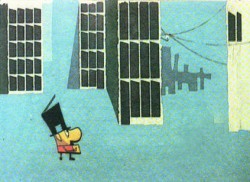 I am of course exaggerating for like everybody else I do not deny that some outstanding animated film masters are brilliant scientists; besides, it is a known fact that extremes meet; mathematics is said to end in poetry, a phenomenon I have not experienced myself so far. Nevertheless, it is a fact that the authors of animated films are mainly former painters, engravers, graphic artists, book illustrators or sculptors who have very little, if any, knowledge of technology. I know many animators who though
I am of course exaggerating for like everybody else I do not deny that some outstanding animated film masters are brilliant scientists; besides, it is a known fact that extremes meet; mathematics is said to end in poetry, a phenomenon I have not experienced myself so far. Nevertheless, it is a fact that the authors of animated films are mainly former painters, engravers, graphic artists, book illustrators or sculptors who have very little, if any, knowledge of technology. I know many animators who though
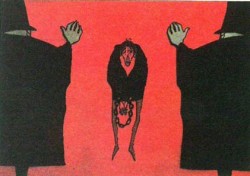 known for a long time have remained completely ignorant of technology, either because they do not take any interest in the subject or because they do not want to fritter away their energy. These artists do however turn to technology for help when they find this necessary or when this is indispensable for the implementation of their ambitious plans or useful in commercial production. I cannot, however, help thinking that they lack a certain dimension, for knowledge of one’s instrument can also be a source of creative inspiration. It is indispensable if one wants to experiment in the field of visual arts.
known for a long time have remained completely ignorant of technology, either because they do not take any interest in the subject or because they do not want to fritter away their energy. These artists do however turn to technology for help when they find this necessary or when this is indispensable for the implementation of their ambitious plans or useful in commercial production. I cannot, however, help thinking that they lack a certain dimension, for knowledge of one’s instrument can also be a source of creative inspiration. It is indispensable if one wants to experiment in the field of visual arts.
I do not think however that scientific talent is an absolute necessity to master technology. I may serve as an example to many artists in this respect. This allows me to speak of myself with less restraint and fewer scruples.
It is my firm conviction that youthful interest in technology is due to two different reasons. The first is pure scientific curiosity which forces us to master our tool by learning its anatomy and the way it works. A child that dismantles an alarm clock part by part in order to get acquainted with its mechanism could serve as an example here. The other reason – and this was my case – is the surprise an artist feels when he realizes the complexity of the instrument which allows him to put his artistic ambitions into effect. I was still a little boy (I was 5, if I remember correctly) when I fell under the spell of cinematography. I had been making drawings for a number of days and my grafitti combined to make a tale. I also liked to tell stories. One day my father, who had a Pathe-Baby projector, showed me the animated cartoon Felix the Cat. The film aroused my admiration and became a spark which helped me to realize my mission. Without my father’s knowledge I would unwind and analyse films in order to understand the mystery of motion, but I never took the trouble to see what a projector looked like inside. This instrument – and it was a holy thing for me – was like Pandora’s box which you could not open without running the risk of seeing the charm disappear. I still have a similar approach to the instrument which has produced the fruit of my reflections. I simply worshipped the old Debrie camera with which I made five or six films and I am still full of admiration for this sophisticated instrument. I have always been my own cameraman and I know the possibilities and limitations of the cameras I use; the invisible wave-like murmur of their mechanism tells me when a breakdown will occur. But once the camera goes out of order and the defect is of a mechanical or electric nature, I am completely at a loss and cannot understand what has happened.
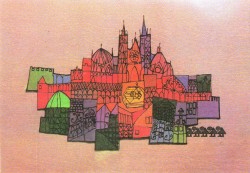 This personal story is to show to what extent and in what respect an artist may acquaint himself with a rather complicated instrument without being technically-minded. It is also meant as an introduction to the essence of my subject, an introduction that will allow me to pass on to what worries many animators; I have in mind their adaptation to new technical possiblities. Many film makers fear a confrontation with such sophisticated instruments as a computer or a video synthetizer. I am no exception here, having come across these fantastic machines on several occasions. I must have been impressed by their complexity or by the learned appearance of the programmers, for I cannot help thinking that my unscientific mind would not be able to exercise sufficient control over a computer. I might be able to overcome my fear if I could play with it for several weeks and had a book with basic information on how it works. I must admit that it would give me great pleasure to be able to shorten the production process of an animated film by the use of a computer. I think, however, that as things stand now the computer has very limited stylistic possibilities. Like John Halas I believe that computerized animated film will develop alongside the old kind without replacing it. It occurred to me when I was recently making a film combining actual photography with animated cartoons that the video-technique would considerably shorten the time of production. But here again I felt that I would not be able to exercise sufficient control over the picture. I am used to the solitary effort of a cottage worker. Production of a film in a laboratory with technicians paid by the hour would probably fail to spur my creative spirit. I may have been “spoiled” by years of work in conditions of uncertainty, which I experienced at the beginning of my drive to creative work.
This personal story is to show to what extent and in what respect an artist may acquaint himself with a rather complicated instrument without being technically-minded. It is also meant as an introduction to the essence of my subject, an introduction that will allow me to pass on to what worries many animators; I have in mind their adaptation to new technical possiblities. Many film makers fear a confrontation with such sophisticated instruments as a computer or a video synthetizer. I am no exception here, having come across these fantastic machines on several occasions. I must have been impressed by their complexity or by the learned appearance of the programmers, for I cannot help thinking that my unscientific mind would not be able to exercise sufficient control over a computer. I might be able to overcome my fear if I could play with it for several weeks and had a book with basic information on how it works. I must admit that it would give me great pleasure to be able to shorten the production process of an animated film by the use of a computer. I think, however, that as things stand now the computer has very limited stylistic possibilities. Like John Halas I believe that computerized animated film will develop alongside the old kind without replacing it. It occurred to me when I was recently making a film combining actual photography with animated cartoons that the video-technique would considerably shorten the time of production. But here again I felt that I would not be able to exercise sufficient control over the picture. I am used to the solitary effort of a cottage worker. Production of a film in a laboratory with technicians paid by the hour would probably fail to spur my creative spirit. I may have been “spoiled” by years of work in conditions of uncertainty, which I experienced at the beginning of my drive to creative work.
And so I come to the next point in my reflections: the animated film as an independent art.
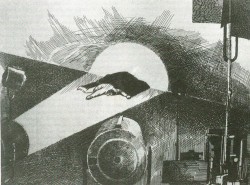 I think that two main aspects can be distinguished here: the aesthetic and the economic aspect of the problem. Let us have a look at the aesthetic aspect first of all. We must agree that it is extremely difficult to determine a priori the degree to which one art depends on another, especially in film art where such disciplines as music, comedy, photography, etc. are primary elements. In the case of animated films we must add other factors relating to visual arts (painting, sculpture, drawing, etc.). I do not think anybody has any doubts about the authenticity of film art. Other artistic disciplines which may become part of a film only play the role of ingredients and bear no responsibility for the nature of cinematographic art itself.
I think that two main aspects can be distinguished here: the aesthetic and the economic aspect of the problem. Let us have a look at the aesthetic aspect first of all. We must agree that it is extremely difficult to determine a priori the degree to which one art depends on another, especially in film art where such disciplines as music, comedy, photography, etc. are primary elements. In the case of animated films we must add other factors relating to visual arts (painting, sculpture, drawing, etc.). I do not think anybody has any doubts about the authenticity of film art. Other artistic disciplines which may become part of a film only play the role of ingredients and bear no responsibility for the nature of cinematographic art itself.
Similar is the case of the animated film. The elements of painting or drawing which go to make an animated film are not a value in themselves but elements meant to achieve a different form of artistic expression which lasts for a fixed period of time. But if this is so, you may ask, what is the place of kinetic painting? Is this also an art independent of painting as such since it also brings movement into the film? To such questions I would reply that enumeration of fine arts is an obsolete way of summing up man’s artistic abilities, for different kinds of art have more and more a tendency to penetrate one another or can be reduced to primary factors and become new disciplines. The definition of art less and less frequently allows us to strictly determine where art begins and where it ends. Consequently, how can we fix the borderlines between various disciplines of act and say to what extent one discipline of art depends on another?
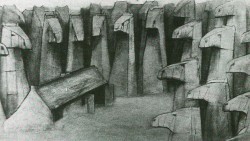 To dispute about the authenticity of animated films compared to other film genres is just as senseless as discussing the sex of angels. Some people will say that a film with actual photography perpetuates real action in order to present it in the desired context while an animated film is wholly a product of the imagination and a direct synthesis of this imagination. This is true, but on the other hand ths viewer, especially if he is an outsider, will experience the same physiological and psychological impressions when seeing both genres. In short, animation is only a different form of film art, a form that is subject to various influences or changes as a result of technological process, i.e., video-graphy, computers, holography and whatever may come. As far as the economic aspect is concerned, I think we can on the whole assume that the animated film is subject to the same laws as all the other film genres. If animated films are rather a marginal production, this is undoubtedly due to the fact that feature-length animated films capable of exercising an influence on the film industry are relatively few. I think however that it is just ar risky for a producer to produce a short animated film made by an artist as it is to make a short film with real-life photography. In any case it is obvious that it is becoming increasingly rare to see a short film in commercial cinemas. The fact that television can be a wonderful market for mass consumption but is a poor solution for films designed by individual artists has been known for a long time.
To dispute about the authenticity of animated films compared to other film genres is just as senseless as discussing the sex of angels. Some people will say that a film with actual photography perpetuates real action in order to present it in the desired context while an animated film is wholly a product of the imagination and a direct synthesis of this imagination. This is true, but on the other hand ths viewer, especially if he is an outsider, will experience the same physiological and psychological impressions when seeing both genres. In short, animation is only a different form of film art, a form that is subject to various influences or changes as a result of technological process, i.e., video-graphy, computers, holography and whatever may come. As far as the economic aspect is concerned, I think we can on the whole assume that the animated film is subject to the same laws as all the other film genres. If animated films are rather a marginal production, this is undoubtedly due to the fact that feature-length animated films capable of exercising an influence on the film industry are relatively few. I think however that it is just ar risky for a producer to produce a short animated film made by an artist as it is to make a short film with real-life photography. In any case it is obvious that it is becoming increasingly rare to see a short film in commercial cinemas. The fact that television can be a wonderful market for mass consumption but is a poor solution for films designed by individual artists has been known for a long time.
The third sector, known as the non-commercial sector, has at its disposal a large distributive potential and could make good the deficiencies of the other two distributive channels, especially with respect to animated films made by individual authors. But it is still bound by too many restrictions to be able to guarantee profitable production.
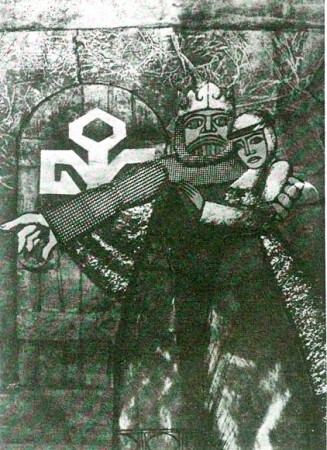 Since animated films are distributed by many companies, there is no planned policy of popularizing this medium in a better way. (This defect could of course be made good by ASIFA, which should not however replace distributors but supply information to distributors and all interested persons). But the market in question is insignificant at the moment, except for the United States, where in view of the large size of the country (especially as on the whole Canada is also part of that market) distribution can be conducted on a large scale. ‘This is not the case in Europe, where no country is large enough to make use of this sector. Moreover, customs regulations do not favour a free flow of films. Let us add that in North America institutions of great cultural utility (museums, libraries) have for long regarded the animated film as an artistic medium of no less importance than painting or literature.
Since animated films are distributed by many companies, there is no planned policy of popularizing this medium in a better way. (This defect could of course be made good by ASIFA, which should not however replace distributors but supply information to distributors and all interested persons). But the market in question is insignificant at the moment, except for the United States, where in view of the large size of the country (especially as on the whole Canada is also part of that market) distribution can be conducted on a large scale. ‘This is not the case in Europe, where no country is large enough to make use of this sector. Moreover, customs regulations do not favour a free flow of films. Let us add that in North America institutions of great cultural utility (museums, libraries) have for long regarded the animated film as an artistic medium of no less importance than painting or literature.
Our European conservatives fully deserve to be called conservatives. The animated film is barred from their temples and most probably they do not realize that the animated film can have different forms, not only that of a cartoon shown on television. ASIFA is an organization which could organize a large-scale informative campaign to wake up academic circles from their sleep.
To conclude these reflections I would like to express my deep conviction that the animated film is undoubtedly one of the best means of fully expressing human emotions and that it will find more and more adherents as science succeeds in reducing, if not eliminating, the boring and cumbersome aspects of this discipline and as man feels himself more and more free in the full sense of the word.
Raoul Servais
.
Illustrations:
1. Raoul Servais
2. False Note 1964
3. Sirene 1968
4. Chromophobia 1966
5. Goldframe 1968
6. To Speak or Not To Speak 1970
7. Pegasus 1973
8. Halewyn’s Chant 1976
9. Harpy 1978
Bill Peckmann &Comic Art 27 Apr 2010 08:11 am
Panels 2
- For a whilie Bill Peckmann was the Associate Editor, with John Benson editing, of a magazine called PANELS. Needless to say this was dedicated to comic strip and animation art. Here from Vol 2 of the magazine is an article by Alex Toth on Jesse Marsh.
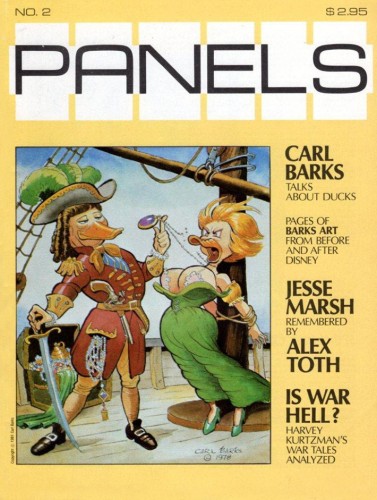
This was the cover of that second issue.
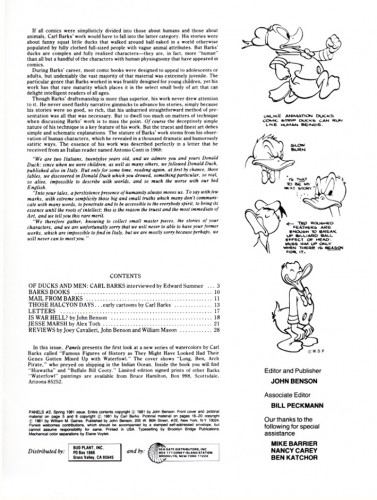
This is the contents page.
(I’d love to see the Carl Barks article.)
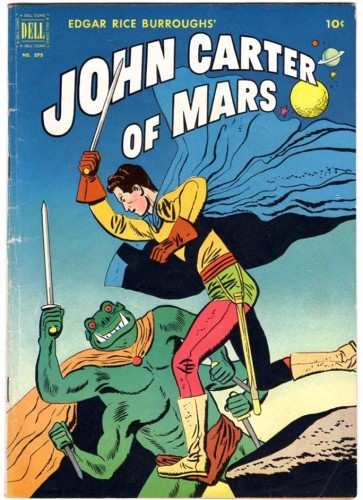 11
11
This cover is inset int0 #8 in B&W.
This is it in color from Bill’s collection.
Needless to say, many thanks to Bill Peckmann for this piece.
Animation &Disney 26 Apr 2010 06:53 am
All the Cats – pt 2
- This is the second half of this scene which is one of several connecting scenes I have from All the Cats Join In. Animated by Ollie Johnston in his very cute style, with panache.
As usual we start with the last image from last week’s half.
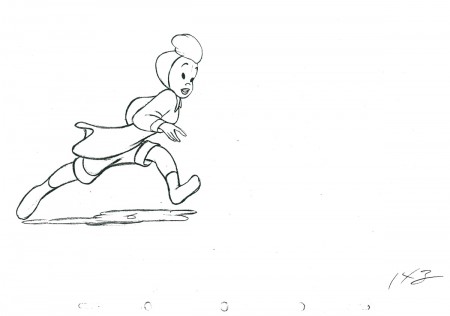 143
143
The following QT movie represents all the drawings of the scene,
including the drawings that were displayed last week.
It’s exposed as per the drawing numbers would indicate.
Right side to watch single frame.
Many thanks for the loan of this scene by Lou Scarborough.
Photos 25 Apr 2010 10:32 am
Steve’s Sunday Photos
- This week I’m relingquishing the photo journal to my friend, Steve Fisher, who has sent me a batch of stunning photos. I can’t resist displaying them.

Steve knows I love Psychic fotos.

Other wacky signs will do as well.

It’s all about the shadow the Empire State Building
throws on the new building center fhoto.

The flag flies in front of holy pictures.

You can never have too many back packs.
Daily post 24 Apr 2010 07:52 am
Recap – Trnka’s Merry Circus
- I’ve been posting quite a few pieces about 3D stop motion animation. It’s always good to remember that the first real genius of this medium was Jiri Trnka. I previously posted this piece in 2007 which focuses on one of the few 2D animated films of Trnka.
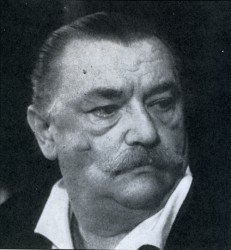 – I’ve been a fan of Jirà Trnka‘s work since I first saw it back in the 60′s. I’ve bought every publication I’ve ever found which discusses or displays his films or illustration. These days I can also own a number of his films.
– I’ve been a fan of Jirà Trnka‘s work since I first saw it back in the 60′s. I’ve bought every publication I’ve ever found which discusses or displays his films or illustration. These days I can also own a number of his films.
His puppet films were always the gold standard of that medium. However, since I’ve studied his illustrations for many years, I’m always interested in the 2D work he’s done.
The dvd titled The Puppet Films of Jirà Trnka includes one of these 2D films. It’s cut-out animation, so it really borders the world between 2D and 3D. Trnka exploits the shadows on his constructed cardboard backgrounds to great effect. The style purposefully hides the three dimensions of the constructions, but it uses it when it needs to. The film is a delicate piece which just shows a number of acts in a local circus setting.
It’s a sweet film with a quiet pace. I’m not sure it could be done in today’s world of snap and speed. No one seems to want to take time to enjoy quiet works of art.
I’m posting a number of frame grabs from this short so as to highlight the piece.
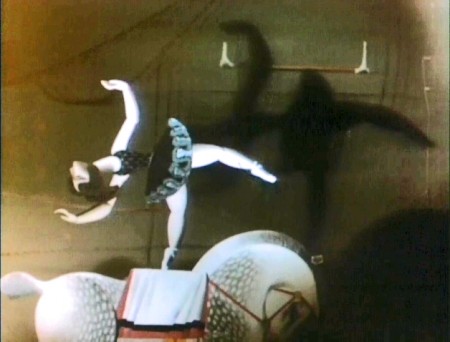
Note the real shadows on the background.
These were obviously animated on glass levels in a multiplane setup.
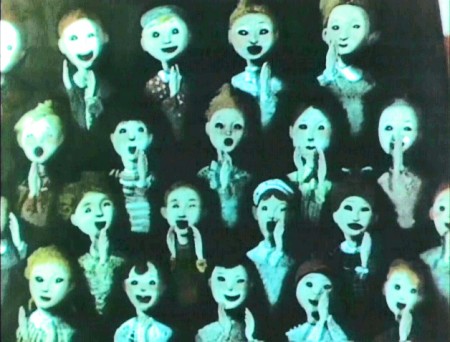
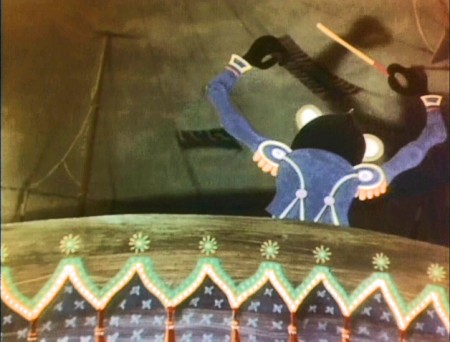
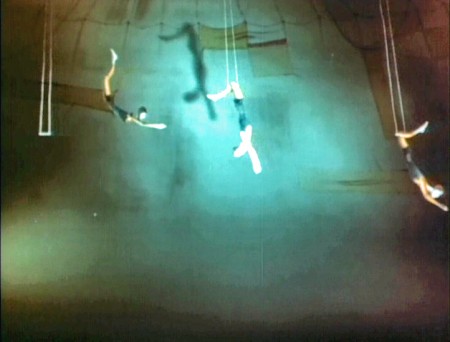
Again, note the excellent use of shadows. It’s very
effective in these long shots of the trapeze artists.
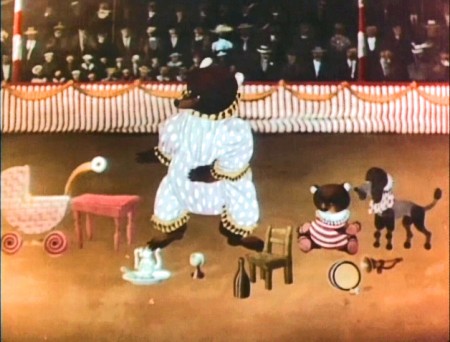
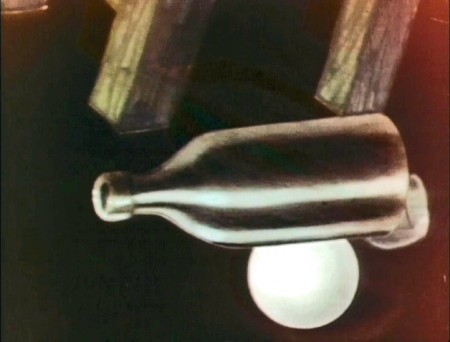
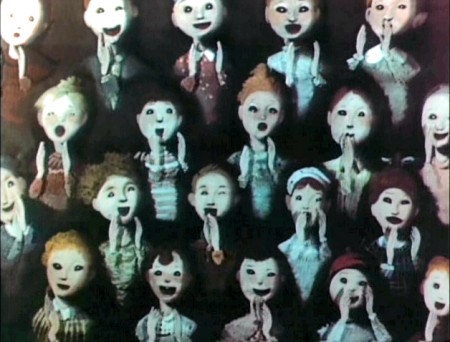
Daily post 23 Apr 2010 06:23 am
B’day
- Today’s William Shakespeare’s birthday. It’s an odd choice of date given that there’s so little information about the guy. But since today’s also my birthday, I’ll enjoy the association by accident.
I’ve decided to post something that’s been floating around my studio for the past couple of years. It’s one of those things that never got properly put away once we moved into the new digs. (New, that is, five years ago.) But since I like seeing it, I also like stumbling across it in the morass of paper in my office.
Tissa David did a birthday card for me for my 50th birthday. She recounted, in storyboard, our first meeting. I was on my second day working for the Hubleys – my first animation job.
It’s close to being accurate, but not as nasty as the version in my head. Here’s Tissa’s board.
Helen, is Helen Komar, a lifelong assistant working in NY first at Paramount then onto lots of other places. She managed the animation area for John and Faith for a couple of years. Another great person who slips through the history books.
I had inbetweened two of Tissa’s scenes on the first day of work. Tissa came in the next day while I was busy working on more. She went to Helen’s desk and the two of them talked for a short bit. Then I heard, “Who has made these HORRIBLE inbetweens?” spoken in the most definitive Hungarian accent you’ll ever hear.
When I sheepishly admitted to it – since only Helen or I could have done them, and there was no doubt Helen hadn’t – Tissa offered to give me some lessons in how to make a proper inbetween. Those lessons seem to have been ongoing most of my life. I’m not sure I can do one to this day.
Animation &Commentary &Independent Animation 22 Apr 2010 07:30 am
Toe Tactic & Howdy Doody
- I’m a bit late in reporting this, but I just found Emily Hubley‘s excellent feature, The Toe Tactic, on the Sundance Channel. I’ve reviewed the film in that past and have shared some of my thoughts. Here’s my review of the DVD.
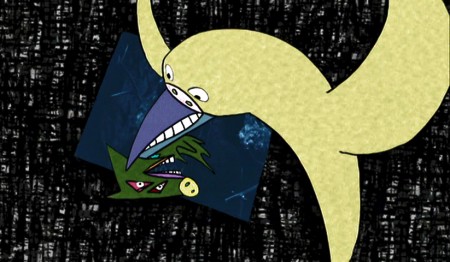
Written and directed by Emily Hubley.
Voices of: David Cross, Andrea Martin,
Eli Wallach, Marian Seldes, Don Byron
Animation by Jeremiah Dickey and Emily Hubley.
The show can be seen on these dates and times in April. Record it if you can’t watch it live.
April 21 4:10am
April 25 10:00pm
April 26 3:55am
April 26 11:45am
- One of the more amazing posts I’ve seen on line in recent weeks (maybe I should say months) is Cartoon Brew TV’s >Howdy Doody and His Magic Hat. This UPA film by Gene Deitch seemed to be lost until Jerry Beck and Amid Amidi were able to discover a good quality print that they’ve put on line.
The piece has to be seen as an edxcellent bit of historical discovery. Deitch’s direction is first rate given the obviously meagre budget. Cliff Roberts’ color design is first rate (given the slight color deterioration of the print) and offers a rich original bit of life. Duane Crowther‘s animation is limited to the point where it might be called more of an animatic than an animation, but even that is done in a spirited sense of fun.
The real find for me was the brilliant score by Serge Hovey. I don’t know his work, but I’m certainly going to be searching to find out more about this composer. The score threads it all together and the playful way that Crowther animated off the score indicates that it was probably prerecorded.
I’m pleased to see this film has been found (thanks, apparently to the work of Dave Gibson for finding the film at the Library of Congress, and to OndÅ™ej MuÅ¡ka for the restoration work on the print.) This is not the greatest film ever made, nor even one of the best UPA shorts. However, it was a missing artifact in the career of a key director in animation’s history. It’s also an absolutely original looking piece that stands above many of the average films of today.
This film is just the tip of the iceburg from the guys at Cartoon Brew. When they’re on it, they’re on it. They share information before anyone else gets the news; they share historical films (such as Howdy Doody and another post of Flebus from Ernie Pintoff while at Terrytoons – posted to memorialize the passing of Allan Swift, the NY mega voice artist), and they present new works we might otherwise miss.
But at this point, everyone in animation knows that this is the first site to visit when sparking up the computer.
Animation &Independent Animation &Tissa David &walk cycle 21 Apr 2010 09:20 am
Tissa’s Old Lady
- Here’s a walk cycle Tissa David animated for R.O.Blechman‘s hour program, A Soldier’s Tale. This is a tiny scene in the show. The camera is moving in on her, so I tried to adjust her a bit to be able to view this as a cycle.
For a slightly overhead view, wth her walking in 3/4 profile, it’s pretty complex animation. The woman carries a lot of weight in her body, and I think Tissa did a great job with her.
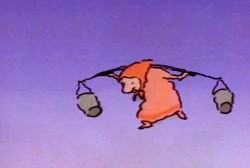 1
1 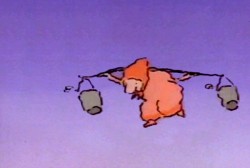 2
2
The following QT represents the drawings above exposed on two’s.
Click left side of the black bar to play.Right side to watch single frame.

